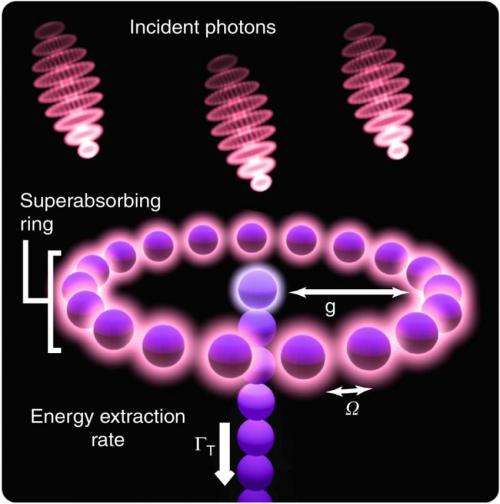September 1, 2014 report
Best of Last Week – Superabsorption theoretically demonstrated, sailing stones mystery solved and origin of anger face

(Phys.org) —It's been a strong week for physics. One team showed that theoretically, superabsorption could be demonstrated using quantum engineering techniques—real world materials that take advantage of it could include quantum camera pixels, the transmission of power via light, and solar cell technology. Also, researchers working at Fermilab announced that they are set to test the very nature of the universe—they want to know if we actually exist in a 2D hologram. Another team working in Vienna has developed a revolutionary new imaging method—they've created an image of a cat without bouncing light off of it using entangled photons. Meanwhile, another team working at the University of Wisconsin has fabricated a qubit with an integrated micromagnet that increases the speed of quantum manipulation in silicon—another step in the march towards creating a true quantum computer.
Less complex but still interesting are the results of experiments carried out that solved the mystery of the sailing stones of Death Valley, California—the odd trails they leave behind have puzzled those who have seen them for hundreds of years. Also of interest, a combined team of researchers from several universities has begun work on what they're calling Robo Brain—a computer network that scours the Internet for informational content and then makes it available via a robot interface—leading, perhaps, to robots in the home or at work that can provide on-the-spot information about whatever needs attending to—how to fix your clothes dryer, for example, or when is the best time to fertilize your lawn. In completely unrelated news from Canada, a team of researchers has confirmed that "invadopodia" plays a role in the spread of cancer—they found cancer cells have tentacle-like structures that allow them to latch onto other organs, leading to the growth of tumors in the new location. This is good news because if a drug can be found to stop the latching, it would mean an end to the spread of cancer. Also, in perhaps worrisome news, a team exploring the ocean depths has found over 500 gas plumes bubbling off the east coast of the U.S.
And finally, if you've been wondering why your mug morphs into a hideous amalgam of stretched and folded flesh when your temper flares, you might be happy to know that a team of researchers has identified the origin and purpose of the anger face—and it's quite menacing.
© 2014 Phys.org





















